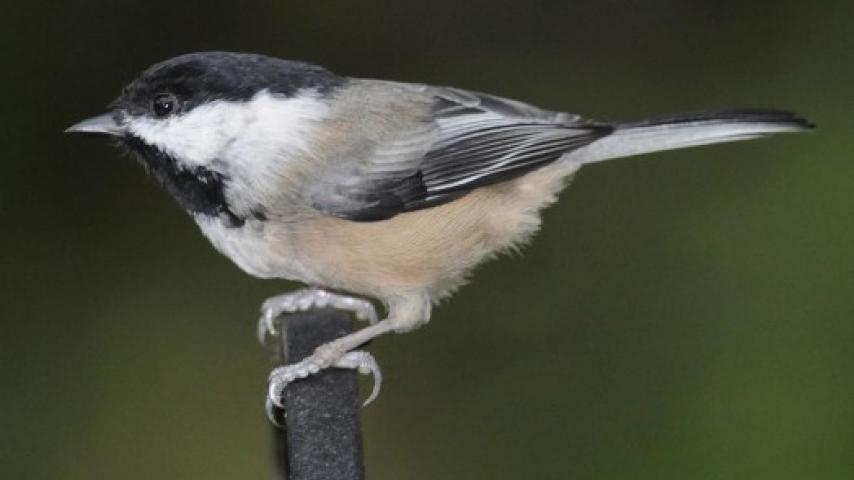Black-capped Chickadee (Poecile atricapillus)
These little (total length 11 cm) gray birds with their long tail, short, pointed bill, black cap and throat, and white cheeks are familiar inhabitants of deciduous woodlands and city parks, wherever there are insects to eat and dead branches in which to excavate their cavity nests.

KINGDOM Animalia - PHYLUM Chordata - CLASS Aves - ORDER Passeriformes - FAMILY Paridae
Their chick-a-dee dee dee calls are frequently heard, and males utter a series of pure whistles during the breeding season.
All chickadees are insectivores, moving rapidly over plant leaves and twigs, searching at close range for the caterpillars and other small insects and spiders that make up their diet. This behavior is called gleaning, and it is characteristic of most small insect-eating birds. They also can feed by picking a prey item from the substrate while hovering. In winter, they consume much more plant matter, and they are almost unique among small songbirds in being able to use their feet to hold seeds in place to peck them open.
Chickadees are mostly nonmigratory, pairs defending a territory in spring and summer and then joining a flock during winter. The breeding territories are about 2-5 hectares in size, but a foraging flock of 6-8 birds moves over a much larger area (10-15 hectares) through the winter. The chickadee flocks often form the nucleus of mixed-species flocks that include nuthatches, kinglets, and other birds that travel together through the winter. The presence of more eyes probably makes them safer from predators such as small hawks.
Black-capped Chickadees are well adapted to the cold winter conditions of the North. During the night, they lower their body temperature to save energy (it takes energy to keep warm). They are such efficient foragers that they can find enough food to sustain them even the short winter days of high latitudes. Their feather coat would put a down jacket to shame. A chickadee’s body temperature may be 100° F warmer than the surrounding air, just a centimeter away!
Chickadees are also food storers, a great adaptation when finding food becomes more difficult during bad weather. They collect seeds (typically sunflower seeds at bird feeders) and cache them individually in crevices all over the woodland. They remember the sites for at least a month and are more likely to return to those sections of their range with larger caches. The hippocampus of their brain, the region associated with spatial memory, is larger than in similar-sized birds that do not store food.
Some chickadees can excavate their own nest cavities in dead wood, and the Black-capped is among them. The female performs that task, which takes a few days. Hole-nesting birds lay more eggs than their cup-nesting relatives, probably because they are safer from predators and therefore can spend more time in the nest. The adults are kept busy constantly to feed the brood of 6-8 young, which remain in the nest for about 16 days.